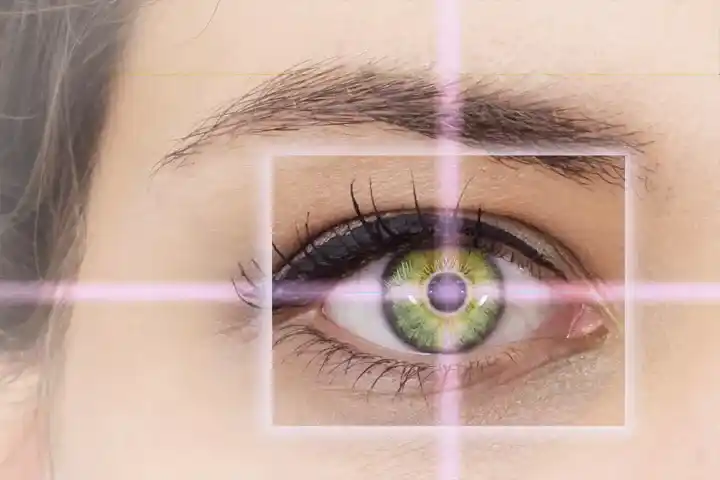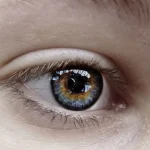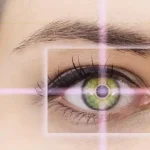LASIK (Laser-Assisted In Situ Keratomileusis) has revolutionised vision correction, making Lasik Surgery a reliable alternative to glasses and contact lenses. Over the past few decades, advancements in Lasik Surgery technology have greatly improved precision, safety, and recovery times. Today, modern Lasik Surgery techniques offer highly customised vision correction tailored to each patient’s unique eye structure. Understanding the evolution of Lasik Surgery helps explain how the procedure has progressed and what patients can expect from the latest innovations in the field.
Early LASIK Procedures
LASIK technology originated in the 1980s and was built upon earlier refractive procedures, including radial keratotomy (RK) and photorefractive keratectomy (PRK). While these earlier procedures helped correct refractive errors, they had limitations such as longer healing times and less predictable results.
The Foundation of LASIK
The first LASIK procedures utilised a microkeratome blade to create a corneal flap, followed by an excimer laser to reshape the cornea and correct vision. While effective, early LASIK had certain drawbacks, including flap complications and inconsistent outcomes due to mechanical limitations. Despite these issues, LASIK quickly gained popularity as it provided faster recovery than PRK and other refractive surgeries.
Limitations of Early LASIK
Some of the primary concerns with early LASIK procedures included:
- Dependence on microkeratome blades could lead to irregular flap creation.
- Higher chances of corneal flap complications.
- Limited ability to treat patients with irregular corneas or high refractive errors.
These limitations paved the way for further technological advancements, developing more precise and safer LASIK procedures.
Evolution of LASIK Technology
Over time, LASIK technology has improved in several key areas, addressing early concerns and offering better visual outcomes. Innovations have focused on enhancing precision, safety, and customisation.
Introduction of Femtosecond Lasers
The transition from microkeratome blades to femtosecond lasers marked a breakthrough in LASIK technology advancements. Femtosecond lasers enable the creation of a highly precise corneal flap, reducing the risk of irregular cuts and improving overall safety. This technology provides:
- More consistent flap thickness.
- Reduced chances of flap complications.
- A safer procedure for patients with thin or irregular corneas.
Wavefront-Guided LASIK
Wavefront-guided LASIK introduced an additional level of customisation by mapping the eye’s unique imperfections. This technology allows for:
- More personalised vision correction.
- Reduction of higher-order aberrations.
- Improved contrast sensitivity and night vision.
Customised Laser Corrections
Beyond wavefront guidance, modern LASIK systems use topographic corneal mapping to provide highly individualised treatment. Topography-guided LASIK technology, like Contoura Vision, corrects even the most minor irregularities in the cornea, leading to more precise, sharper vision.
Latest LASIK Technology
As LASIK technology evolves, newer methods focus on even greater accuracy, safety, and patient satisfaction. Some of the latest LASIK technology innovations include:
Femtosecond Laser Flaps
The shift to femtosecond lasers has eliminated the risks associated with mechanical microkeratomes. This technology allows for:
- Greater precision in flap creation.
- Lower risk of complications.
- Faster healing time.
Wavefront-Optimised LASIK
Wavefront-optimised LASIK goes beyond standard treatments by considering the cornea’s natural curvature. This technique reduces the risk of glare and halos while maintaining a natural corneal shape, leading to superior visual quality.
Adaptive Optics and AI Integration
Recent advancements incorporate artificial intelligence (AI) and adaptive optics to ensure corrections in real-time. Custom Eyes by SCHWIND with AI overlay is the latest in personalised laser vision correction and treatment, with AI-enabled predictive modelling, to enhance predictability in refractive surgeries.
These developments ensure:
- Greater precision in vision correction.
- Customisation based on real-time eye movements.
- Enhanced patient outcomes with fewer complications.
LASIK vs SMILE Technology
While LASIK remains one of the most popular vision correction procedures, SMILE (Small Incision Lenticule Extraction) has emerged as an alternative. Understanding the differences between LASIK and SMILE technology can help patients make informed decisions.
Key Differences Between LASIK and SMILE
- LASIK: Involves creating a corneal flap and using an excimer laser to reshape the cornea.
- SMILE: Removes a small lenticule from within the cornea through a tiny incision without requiring a flap.
Which Procedure is Right for You?
The choice between LASIK and SMILE depends on several factors:
- Corneal Thickness: Patients with thin corneas may benefit more from SMILE.
- Refractive Error: LASIK can treat a broader range of vision issues, including hyperopia.
- Recovery Time: SMILE involves a smaller incision, possibly contributing to faster healing and reduced dry eye symptoms.
Contoura Vision LASIK
Contoura Vision LASIK is an advanced topography-guided treatment that customises vision correction based on the patient’s corneal shape. It offers benefits such as:
- Higher precision in correcting refractive errors.
- Improved contrast sensitivity, reducing glare and halos.
- More personalised treatments for individuals with irregular corneal surfaces.
Topography-Guided LASIK
Topography-guided LASIK further enhances vision correction by addressing corneal irregularities that standard LASIK may not entirely correct. This approach provides a more detailed map of the cornea, allowing for:
- More accurate laser corrections.
- Better outcomes for patients with astigmatism or irregular corneas.
Benefits and Considerations
The advancements in LASIK technology have led to numerous benefits, including:
- Faster recovery times.
- Reduced risk of complications.
- Improved night vision and contrast sensitivity.
However, potential considerations include:
- Candidacy requirements (not all patients qualify).
- Possible dry eye symptoms.
- There is a rare need for enhancement procedures.
Things to Remember Before LASIK
Before undergoing LASIK, it is essential to consider the following:
- A comprehensive eye exam is necessary to determine eligibility.
- Post-operative care is crucial for optimal healing and results.
- Lifestyle factors, such as avoiding strenuous activities during recovery, should be considered.
Conclusion
LASIK technology advancements continue to improve safety, precision, and patient satisfaction. Refractive surgery has made significant progress from early procedures to modern topography-guided treatments. Consulting an eye specialist is the best way to determine the most suitable vision correction option.
Ready to explore your LASIK options? Consult an expert and take the first step toward a clearer vision. Schedule Your LASIK Consultation!
FAQs
A: LASIK has advanced from microkeratome-based techniques to femtosecond lasers, wavefront-guided corrections, and topography-guided LASIK, enhancing precision and patient outcomes.
A: LASIK involves creating a flap and reshaping the cornea with an excimer laser, while SMILE removes a lenticule through a small incision. Each has unique benefits depending on the patient’s needs.
A: Patients with irregular corneas or complex vision imperfections may benefit from topography-guided LASIK.





